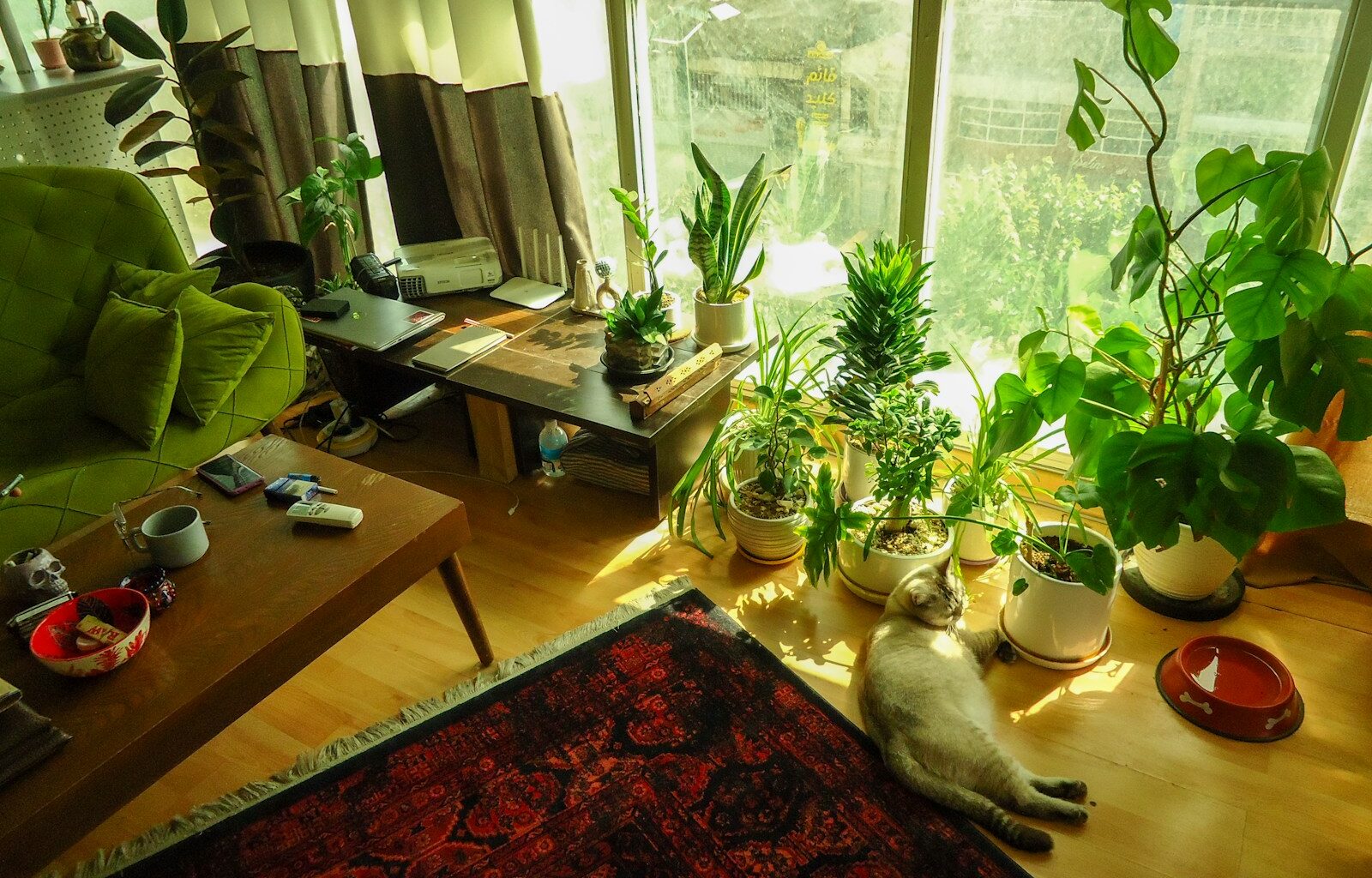Building a mini indoor herb garden provides fresh herbs year-round while improving indoor air quality, reducing grocery costs, and creating a rewarding growing experience in any living space. Research from NASA shows that herb plants improve indoor air quality by removing 87% of air toxins within 24 hours, while economic studies indicate that indoor herb gardens save households an average of $600 annually on fresh herb purchases.
1. Location Selection and Light Assessment
1.1 Natural Light Optimization
South-facing windows provide 6-8 hours of direct sunlight ideal for Mediterranean herbs like basil, oregano, and thyme, while east or west windows suit herbs requiring moderate light like parsley and cilantro. Assess your available light before selecting herbs to ensure successful growth.
1.2 Supplemental Lighting Solutions
LED grow lights extend growing possibilities to any location while providing consistent light regardless of weather or season. Full-spectrum LED lights consume 50% less energy than fluorescent alternatives while producing better plant growth and herb flavor development.
1.3 Space Efficiency and Accessibility
Choose locations that provide easy access for daily care while maximizing vertical space through shelving or hanging planters. Kitchen herb gardens offer convenience for cooking while bathroom locations benefit from higher humidity levels that many herbs prefer.
1.4 Temperature and Climate Considerations
Most herbs thrive in 65-75°F temperatures with good air circulation, making typical indoor environments ideal for herb growing. Avoid locations near heating vents, air conditioning units, or drafty areas that create temperature fluctuations.
2. Container Selection and Drainage Systems
2.1 Proper Sizing for Root Development
Herbs require containers at least 6-8 inches deep with adequate width for root spread—basil and parsley need larger containers while thyme and oregano succeed in smaller spaces. Proper sizing prevents root binding and supports healthy, productive plants.
2.2 Drainage Solutions and Water Management
Drainage holes prevent root rot by allowing excess water to escape, while saucers protect surfaces from water damage. Layer small rocks or gravel in container bottoms to improve drainage and prevent soil from blocking drainage holes.
2.3 Material Considerations and Aesthetics
Terra cotta pots provide excellent drainage and root aeration while ceramic and plastic containers offer more color and style options. Choose materials that complement your decor while providing proper growing conditions for herb success.
2.4 Self-Watering and Maintenance Systems
Self-watering planters reduce maintenance requirements while preventing over or under-watering that commonly kills indoor herbs. These systems maintain consistent moisture levels that promote steady growth and reduce daily care requirements.
3. Soil Selection and Nutrient Management
3.1 High-Quality Potting Mix Benefits
Quality potting mixes provide proper drainage, aeration, and nutrition while preventing soil-borne diseases common in garden soil. Look for mixes containing perlite, vermiculite, and organic matter that support healthy root development and nutrient uptake.
3.2 Organic Matter and Soil Amendment
Adding compost, worm castings, or organic fertilizer to potting mix provides slow-release nutrition while improving soil structure and water retention. Organic amendments support beneficial microorganisms that enhance plant health and nutrient availability.
3.3 pH Balance and Nutrient Availability
Most herbs prefer slightly alkaline soil with pH 6.0-7.0 for optimal nutrient uptake and growth. Simple pH testing kits help determine soil conditions while lime or sulfur adjustments create ideal growing environments.
3.4 Fertilization Schedules and Feeding
Liquid fertilizer applications every 2-4 weeks during growing seasons support consistent growth and flavor development. Diluted fish emulsion or balanced organic fertilizers provide gentle nutrition without burning delicate herb roots.
4. Herb Selection and Companion Planting
4.1 Beginner-Friendly Herb Varieties
Basil, parsley, cilantro, chives, and mint offer easy growing, rapid harvests, and frequent culinary use, making them ideal choices for beginning indoor gardeners. These herbs forgive minor care mistakes while providing substantial yields.
4.2 Growth Habit and Space Requirements
Understanding herb growth patterns helps plan container arrangements—tall herbs like basil behind shorter ones like thyme, while spreading herbs like oregano need individual containers. Proper spacing prevents overcrowding and competition for light and nutrients.
4.3 Seasonal Growing and Succession Planting
Starting new herb plants every 4-6 weeks ensures continuous harvests while preventing gaps in supply. Cool-season herbs like cilantro and parsley grow well in winter while warm-season herbs like basil prefer spring and summer conditions.
4.4 Companion Benefits and Pest Management
Certain herb combinations provide mutual benefits—basil improves tomato flavor when grown together, while strong-scented herbs like rosemary and thyme naturally repel insects and pests that might damage other plants.
5. Watering Techniques and Moisture Management
5.1 Proper Watering Frequency and Timing
Most herbs prefer deep, infrequent watering when soil surface feels dry, typically every 2-4 days depending on container size, plant size, and environmental conditions. Morning watering allows plants to absorb moisture before evening cooling.
5.2 Water Quality and Treatment
Room-temperature water prevents root shock while filtered or settled tap water removes chlorine that can damage beneficial soil microorganisms. Collected rainwater provides ideal mineral content for optimal herb growth and flavor.
5.3 Humidity Control and Air Circulation
Grouping plants together increases local humidity while small fans improve air circulation that prevents fungal problems and strengthens plant stems. Proper air movement also helps regulate soil moisture and prevents stagnant conditions.
5.4 Seasonal Watering Adjustments
Winter heating reduces humidity and increases watering needs while summer growth spurts require more frequent watering. Adjusting watering schedules to seasonal conditions prevents both drought stress and overwatering problems.
6. Harvesting Techniques and Ongoing Care
6.1 Optimal Harvesting Timing and Methods
Regular harvesting encourages continued growth while providing fresh herbs for cooking—pick leaves in morning after dew evaporates but before heat stress occurs. Harvest no more than 1/3 of plant at one time to maintain plant health.
6.2 Pinching and Pruning for Productivity
Pinching flower buds redirects energy into leaf production while regular pruning maintains bushy, productive growth. Proper pruning techniques extend harvest periods and prevent herbs from becoming woody or bitter.
6.3 Pest Prevention and Problem Solving
Common indoor herb problems include aphids, spider mites, and fungal issues that respond to early intervention through proper care, beneficial insects, or organic treatments. Prevention through good growing conditions works better than reactive treatments.
6.4 Seasonal Care and Winter Maintenance
Reducing fertilization and watering during winter months allows herbs to rest while providing adequate light and temperature prevents dormancy problems. Some herbs benefit from cool winter treatments that improve spring growth.
7. Advanced Techniques and System Expansion
7.1 Hydroponic and Soilless Growing
Hydroponic herb systems provide faster growth and higher yields while eliminating soil-related problems like pests and diseases. Simple hydroponic setups work well for herbs and require less space than traditional soil gardening.
7.2 Seed Starting and Propagation
Starting herbs from seeds provides more variety choices and lower costs while teaching valuable gardening skills. Many herbs also propagate easily from cuttings, allowing expansion of successful plants without additional purchases.
7.3 Vertical Growing and Space Maximization
Vertical garden systems, hanging planters, and tiered shelving maximize herb production in limited space while creating attractive living walls. These systems support larger herb collections in small apartments or limited growing areas.
7.4 Preservation and Storage Methods
Drying, freezing, and preserving excess herbs extends the garden’s value while providing herbs during non-growing periods. Proper preservation maintains flavor and nutritional value for months after harvest.
Conclusion
Building a successful mini indoor herb garden requires attention to location, containers, soil, plant selection, and ongoing care, but provides year-round fresh herbs, improved indoor air quality, and gardening satisfaction regardless of outdoor conditions. Start with easy herbs like basil and parsley in appropriate containers with quality soil and adequate light, then expand your garden as experience grows. The key to success lies in consistent care, proper harvesting, and learning from each growing cycle. Your indoor herb garden will provide fresh flavors, natural air purification, and the satisfaction of growing your own food while connecting you to the rewarding practice of gardening throughout the year.












